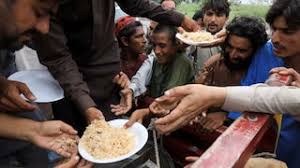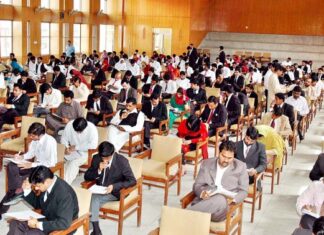A Letter from Prometheus
“Do our judges, politicians, and Army Generals realize where Pakistan stands today?” This question has been raised by Atif Mian who is a Pakistani-American top economist. He is a professor of economics at Princeton University. In a desperate mood on April 5, the professor took to Twitter and asked several questions that the majority of Pakistani people are asking today. One can visit his Twitter handle to read a series of questions and I believe his questions were simple and honest.
I wish to add one more question to the list. Why should the power elite (whom I always call “superclass”) care about Pakistan when its members have all opportunities and resources to fly to any country of their desire to spend the rest of their lives? Atif Mian was shy to add “business tycoons” to the list but I include business tycoons because they are equally responsible and are an indigenous part of the “superclass”.
Every sane person who loves this country is asking for how long two Pakistans (one a gated-communities Pakistan and the second is real Pakistan) will survive side by side. Pakistan had been recolonized for the last 75 years by Government Officers’ Residences (GORs), Judicial colonies, Muhafaz colonies, Cantonments, Defence Housing Societies (DHAs), Bahria Housing Societies, Anchorage Housing Societies, Fazaia Housing Schemes, Army Welfare Trust (AWT) colonies, etc. There is also a long list of second-tier gated-communities spreading all over the country. The population is divided into two categories: zombies who live outside these gated colonies and humans who live inside gated colonies. This all happened not in one decade, rather we tirelessly contributed for over 75 years to establish this New Pakistan.
Gated neighbourhoods are also called gated communities and gated housing. Can you believe that over 1,500 such gated neighbourhoods are spread all over Pakistan? A gated neighbourhood is a residential area where the boundary of the society is marked and protected by walls, and the entrances and exits are guarded. Many of them have their own policing system and the state’s police cannot enter such gated communities.
Developers of gated housing target the wealthier categories of customers by promoting high standards. They promote that such places offer a sense of security, privacy, cleanliness, peacefulness, and being a member of an exclusive residential community of like-minded peace and privacy seekers. The construction of gated communities has become one of the fastest-growing real estate trends in Pakistan that is dividing the country into small states instead of estates, because these communities have their own security arrangements and right of entry is reserved to the community.
As a new style of residential development, gated communities appear to be a reflection of territorial and social segregation since the early 1900s and no research has ever been conducted in Pakistan to examine the psychological, social, economic, and barrier factors of gated communities’ impacts. Even our universities are shy to conduct such research because almost all private universities are run by the superclass. The issue of gated communities is delicate and reflects social stratification in Pakistani society by producing and reproducing societal power relations.
The unmendable social effect of increasing the number of GCs for residential integrity is evident and recognized by many urban geographers and sociologists who have analyzed GCs in the context of social segregation and a number of researches are available, except any such from Pakistan. The majority of urban housing sociologists believe that when real estate tycoons become “Class Markers”, then they become “powerbrokers” and this is what we have already seen in Pakistan.
In simple words, power to control (that is, who has control of the housing market), power to own/buy (who can afford a specific form of housing), power to use (who is able to use the spaces), power to choose a lifestyle (who can afford a specific lifestyle), and power to restrict access to (who is able to privatize spaces) are very sensitive questions which we are avoiding discussing as a nation.
As a student of philosophy, I understand that the rich part of the Pakistani population fears the poor and therefore chooses gated forms of housing, and this class is the same that enacts laws and rules, therefore nobody dares to ask questions and raise fingers against this dangerous phenomenon that is constant and unchecked.
This phenomenon has disintegrated society and the population living inside gated communities live in a different kind of Pakistan having less physical, psychological, and social relationships with those who live outside gated communities. The lifestyles of residents of gated communities are restricted to the private spaces of the cities: taking place between homes, offices, and specific commercial areas.
Sociologists believe that social status is not only defined by one’s profession but also by the location and form of housing one has access to, in which architecture, surroundings, comfort, and security play a central role. Gated communities are simply portrayed as the homes of people of “good taste” and “cultured” while people living outside of those whose reference is given by poet Sahir Ludhihavi in his popular piece “Madam”.
He writes:
Aap be-vajah pareshān sī kyuuñ haiñ mādām
(Why do you worry for no reason at all, madam)
log kahte haiñ to phir Thiik hī kahte hoñge
(If people say things, they must be speaking the truth)
mere ahbāb ne tahzīb na sīkhī hogī
(My friends must not have learned about manners)
mere māhaul meñ insān na rahte hoñge
(Human beings must not live where I do)
nūr-e-sarmāya se hai rū-e-tamaddun kī jilā
(The shine on the face of culture derives from the light of capitalism)
ham jahāñ haiñ vahāñ tahzīb nahīñ pal saktī
(Civilization cannot thrive where we are)
muflisī hiss-e-latāfat ko miTā detī hai
(Poverty blots out the sense of finer things)
bhuuk ādāb ke sāñchoñ meñ nahīñ Dhal saktī
(Hunger cannot be cast into the mould of manners)
Those belonging to the middle and upper classes are attracted to gated communities, whereas those situated lower on the social ladder are described as those living in “regular” neighbourhoods. This psychological infighting between the “regular” and “elite” has become so intense that it is triggering hatred against those who are the permanent “superclass” in Pakistan. The growing inequalities in any society are called extreme social fault-lines that later or sooner make the total social infrastructure collapse, and Gated Communities (GCs) appear to be one of the symbols of territorial and social segregation.
The unmendable social effect of increasing the number of GCs for residential integrity is evident and recognized by many urban geographers and sociologists who have analyzed GCs in the context of social segregation and a number of researches are available, except any such from Pakistan. The majority of urban housing sociologists believe that when real estate tycoons become “Class Markers”, then they become “powerbrokers” and this is what we have already seen in Pakistan.
I suggest our academicians and practitioners give some attention to this subject and they should engage students to review the situation in Pakistan and document it for those who really wish to mitigate class segregation before it triggers anti-state feelings among our youth.























